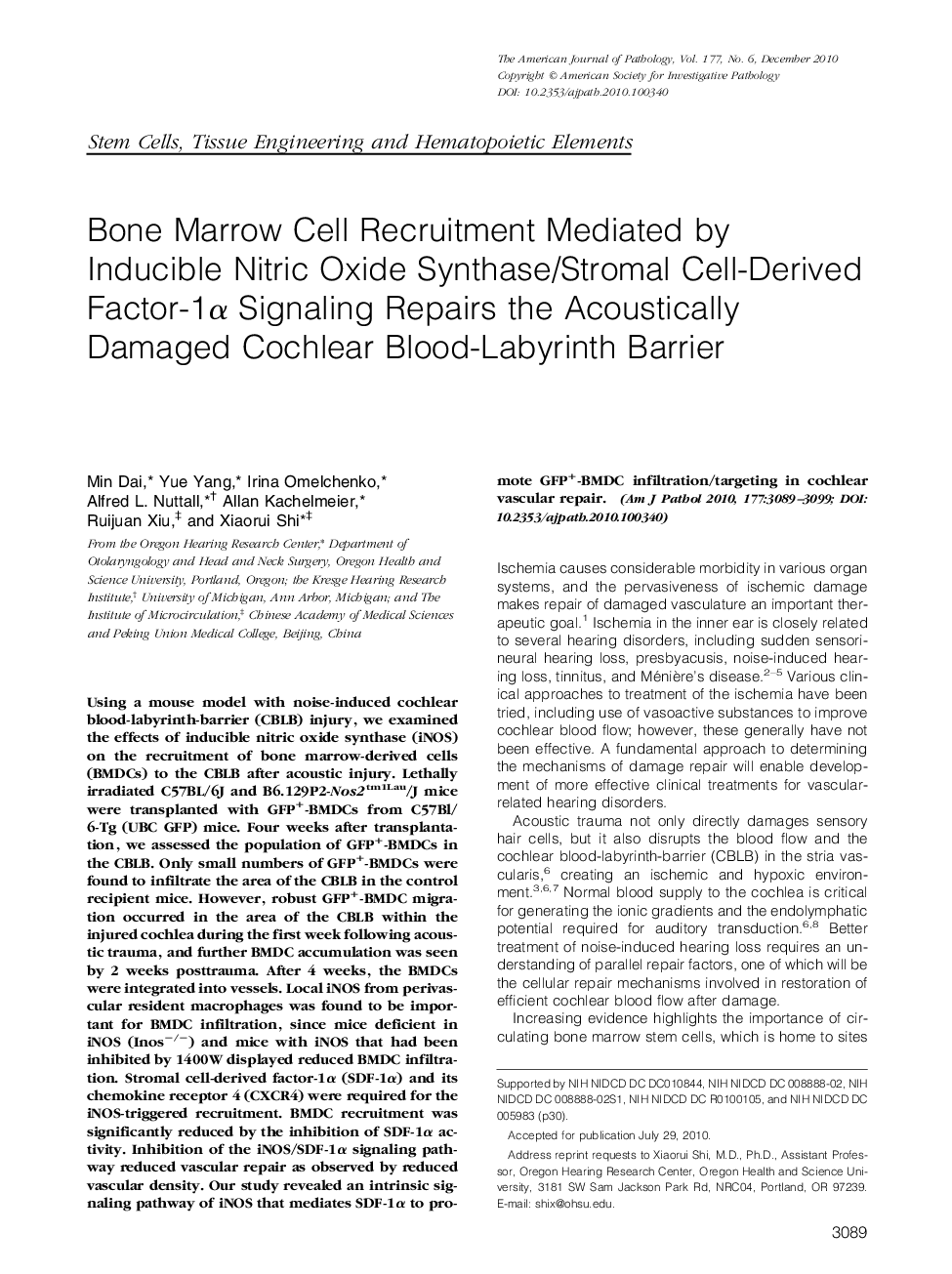| Article ID | Journal | Published Year | Pages | File Type |
|---|---|---|---|---|
| 5934510 | The American Journal of Pathology | 2010 | 11 Pages |
Using a mouse model with noise-induced cochlear blood-labyrinth-barrier (CBLB) injury, we examined the effects of inducible nitric oxide synthase (iNOS) on the recruitment of bone marrow-derived cells (BMDCs) to the CBLB after acoustic injury. Lethally irradiated C57BL/6J and B6.129P2-Nos2tm1Lau/J mice were transplanted with GFP+-BMDCs from C57Bl/6-Tg (UBC GFP) mice. Four weeks after transplantation, we assessed the population of GFP+-BMDCs in the CBLB. Only small numbers of GFP+-BMDCs were found to infiltrate the area of the CBLB in the control recipient mice. However, robust GFP+-BMDC migration occurred in the area of the CBLB within the injured cochlea during the first week following acoustic trauma, and further BMDC accumulation was seen by 2 weeks posttrauma. After 4 weeks, the BMDCs were integrated into vessels. Local iNOS from perivascular resident macrophages was found to be important for BMDC infiltration, since mice deficient in iNOS (Inosâ/â) and mice with iNOS that had been inhibited by 1400W displayed reduced BMDC infiltration. Stromal cell-derived factor-1α (SDF-1α) and its chemokine receptor 4 (CXCR4) were required for the iNOS-triggered recruitment. BMDC recruitment was significantly reduced by the inhibition of SDF-1α activity. Inhibition of the iNOS/SDF-1α signaling pathway reduced vascular repair as observed by reduced vascular density. Our study revealed an intrinsic signaling pathway of iNOS that mediates SDF-1α to promote GFP+-BMDC infiltration/targeting in cochlear vascular repair.
